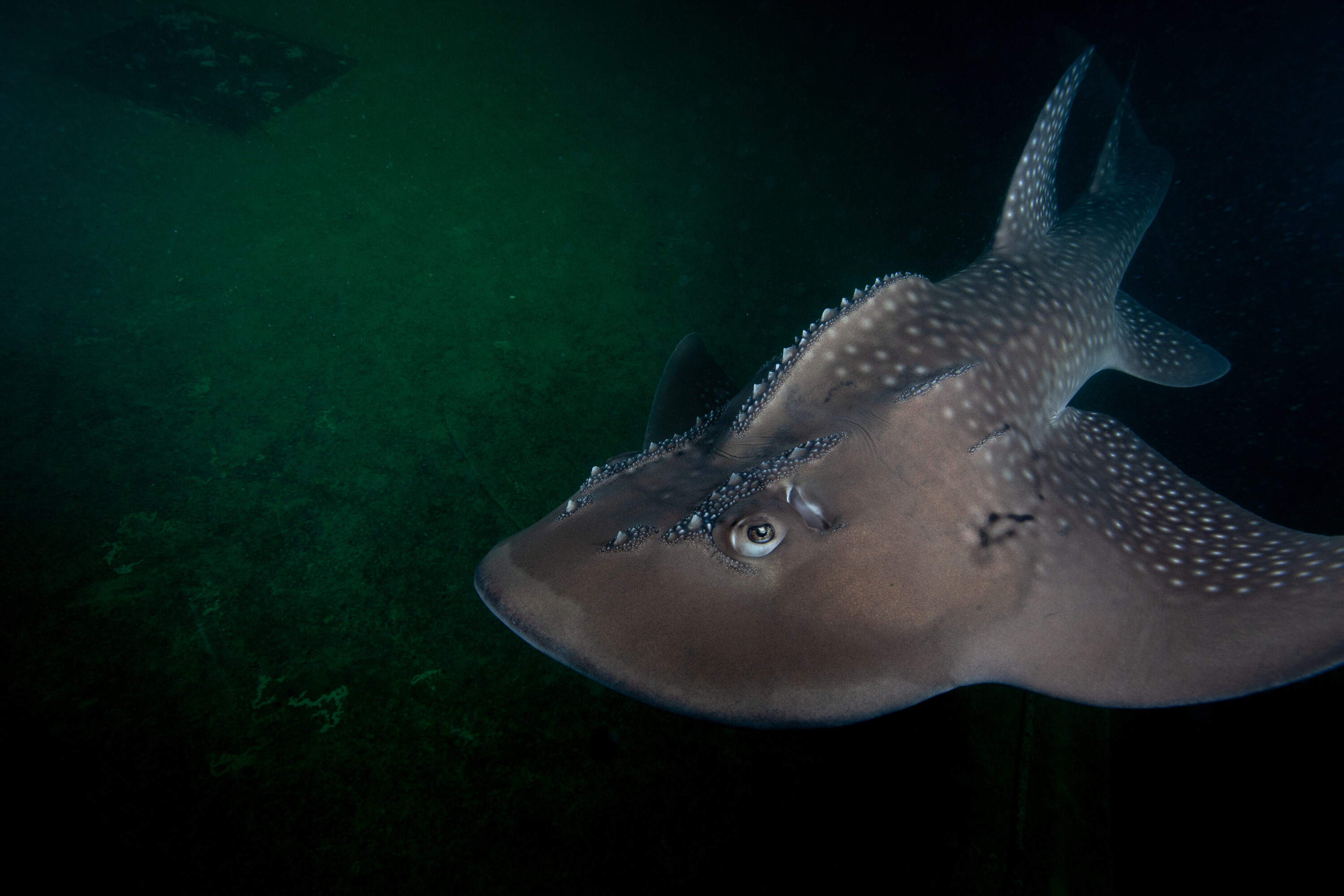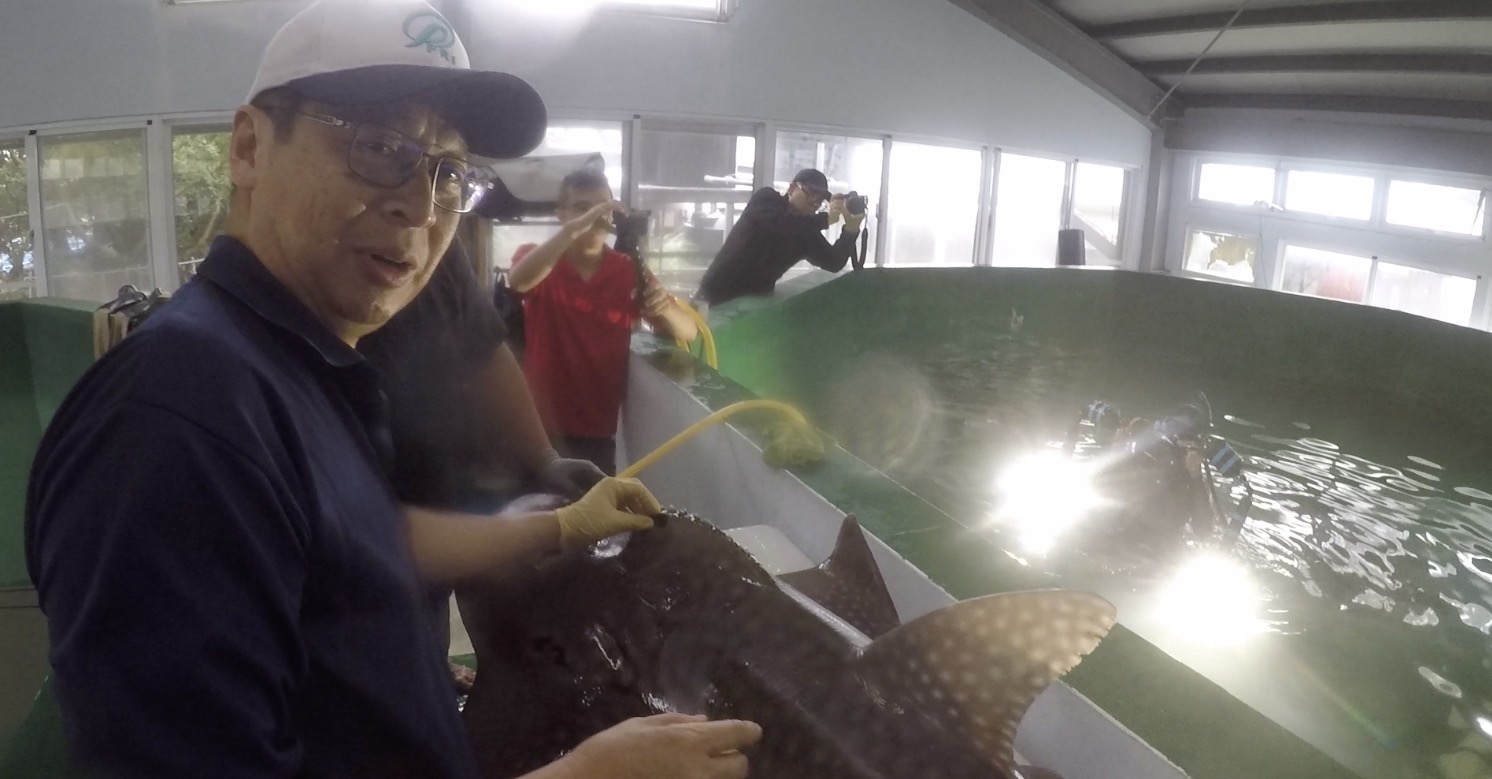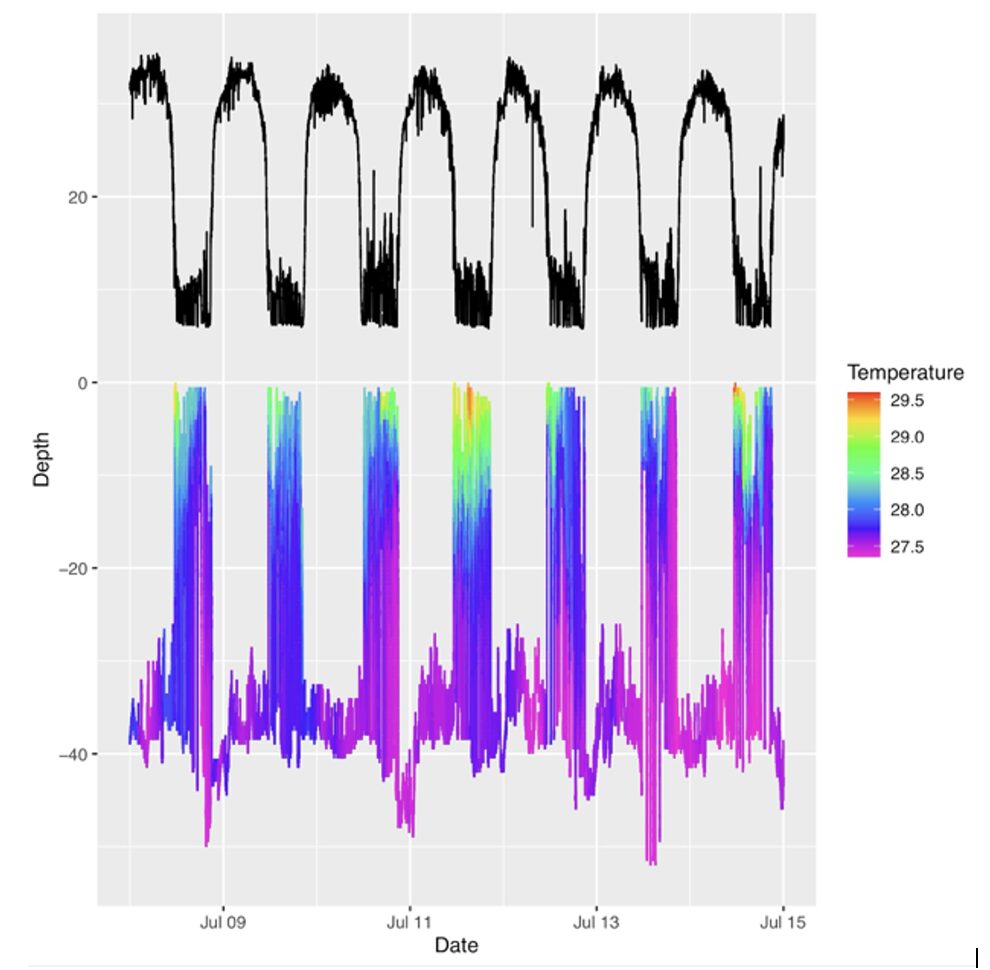Migrations of the shark ray (aka bowmouth guitarfish) in Taiwan
Rhinopristiforms are demersal elasmobranchs that live in near coast environments where people do most bottom-contact fishing (e.g., trawl, gillnet). Most species including Rhynchobatus immaculatus (Taiwanese wedgefish) and Rhina ancylostomus (bowmouth sharkray) are critically endangered (IUCN redlist). These species are prized in the shark fin trade.
On the eastern coast of Taiwan there is a very unique combination of conditions that enable us to conduct studies on live specimens. Nearshore fisheries take wedge- and guitarfishes as bycatch, near to the holding tank facilities of the Fisheries Research Institute. This provides us the opportunity to transport live specimens quickly from the ocean to the holding tanks for research, and then quickly back to the oceans for release to the wild.

A Rhina swims in the tank at the Taiwan Fishery Research Institute facility in Chenggong. Photo © Kevin Weng
Wei-Chuan “Riyar” Chiang, the director of the Eastern Marine Biology Research Center, knows everyone involved in fishing in the southeast of Taiwan, and these connections are essential for accessing such a rare creature. Riyar was able to obtain a healthy specimen from a fishermen, and tag it with a pop-up satellite tag.

Wei-Chuan "Riyar" Chiang places a pop-up satellite tag on a Rhina in Chenggong, Taiwan. Photo © Kevin Weng
Zola Chen and Kevin Weng stabilise the Rhina in the back of a truck full of sea water, as it is transported from the research facility to the ocean. Video © Kevin Weng
A tagged wedgefish swims away in the waters of Chenggong, Taiwan. Video © Garmin Hsu
Our team was able to tag another Rhina through a collaboration organised by Fred Fan Aquatics. This smaller male Rhina was released near the Penghu Islands.
A juvenile Rhina swims in a tank at a facility in Penghu, Taiwan. Video © Kevin Weng
After 89 days the pop-up tag surfaced north of the Penghu Islands and began transmitting. Riyar immediately began organising a recovery mission, and the team headed out to sea. Using a special direction finding device, they were able to locate this tiny floating transmitter in the middle of the ocean!

The Taiwan Fishery Research Institute staff prepare to recover the pop-up tag, floating in the ocean. Photo © Wei-Chuan Chiang

The Taiwan Fishery Research Institute staff with the pop-up tag that they found after it released from the Rhina. Photo © Wei-Chuan Chiang
Back at the lab, Riyar was able to download a high resolution archival dataset – a fancy way of saying we got loads of data!). Kevin plotted up the depth, temperature and light record to see what this little guy had been up to.

The black line in the upper panel shows the light intensity, reflecting day and night over one week. In the lower panel, the color of line shows temperature (C) and vertical position of the line shows depth (m). We can see from this plot that the juvenile male Rhina stayed on the bottom during day and conducted oscillatory dives during night, indicating nocturnal feeding. These new data show the species is not strictly demersal and could be caught in the water column or at the surface. Figure © Kevin Weng and Wei-Chuan Chiang
Our team:
Kevin Weng, Jan McDowell, Virginia Inst of Marine Science, USA
Wei-Chuan Chiang, Fisheries Research Institute, Taiwan
Nan-Jay Su, Yue-Feng Sung, Brian Huang, National Taiwan Ocean University, Taiwan
